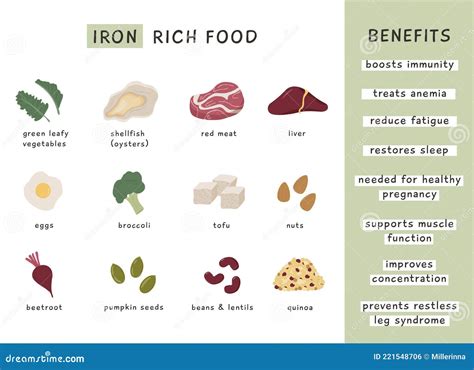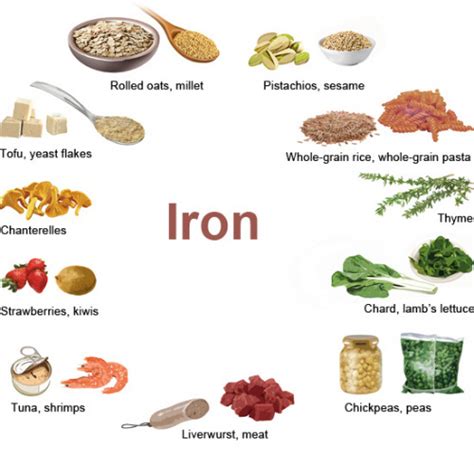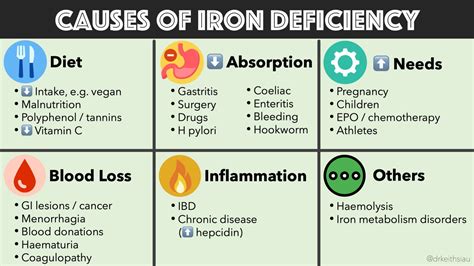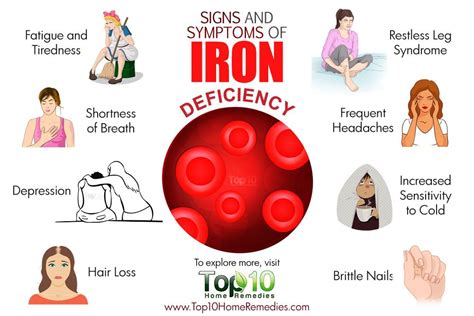Iron is an essential nutrient that plays a critical role in various bodily functions, including the production of red blood cells, which carry oxygen throughout the body. Iron deficiency is a common nutritional disorder that can lead to anemia, fatigue, and other health problems. Fortunately, there are many delicious and iron-rich foods that can help boost your iron intake. In this article, we will explore 7 foods high in iron, their benefits, and ways to incorporate them into your diet.
Iron deficiency affects millions of people worldwide, and it is particularly common among women, children, and individuals with certain medical conditions. The good news is that iron deficiency can be prevented and treated by consuming iron-rich foods. The recommended daily intake of iron varies based on age, sex, and other factors, but most adults need about 8-18 milligrams of iron per day. By including iron-rich foods in your diet, you can help meet your daily iron needs and maintain optimal health.
A well-balanced diet that includes a variety of iron-rich foods can provide numerous health benefits. Iron helps to transport oxygen to cells, supports immune function, and plays a role in cognitive development and function. Additionally, iron deficiency has been linked to various health problems, including anemia, fatigue, and poor cognitive performance. By consuming iron-rich foods, you can help reduce your risk of iron deficiency and maintain optimal health.
Introduction to Iron-Rich Foods
Iron-rich foods can be divided into two categories: heme iron sources and non-heme iron sources. Heme iron sources, such as meat, poultry, and fish, contain iron in the form of hemoglobin and myoglobin. Non-heme iron sources, such as plant-based foods, contain iron in the form of ferritin and other compounds. While both types of iron are essential, heme iron is more easily absorbed by the body.
7 Foods High in Iron
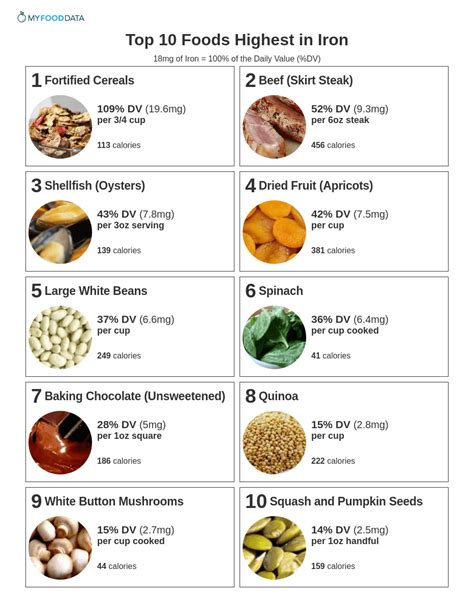
Here are 7 foods high in iron that you should include in your diet:
* Red meat: Red meat is an excellent source of heme iron, with a 3-ounce serving of cooked beef containing about 3-4 milligrams of iron.
* Spinach: Spinach is a rich source of non-heme iron, with a 1-cup serving of cooked spinach containing about 6-7 milligrams of iron.
* Lentils: Lentils are a type of legume that are high in non-heme iron, with a 1-cup serving of cooked lentils containing about 6-7 milligrams of iron.
* Pumpkin seeds: Pumpkin seeds are a good source of non-heme iron, with a 1/4 cup serving containing about 4-5 milligrams of iron.
* Quinoa: Quinoa is a complete protein and a good source of non-heme iron, with a 1-cup serving of cooked quinoa containing about 2-3 milligrams of iron.
* Turkey: Turkey is a good source of heme iron, with a 3-ounce serving of cooked turkey containing about 2-3 milligrams of iron.
* Fortified cereals: Many breakfast cereals are fortified with iron, making them a convenient way to boost your iron intake.
Benefits of Iron-Rich Foods
The benefits of iron-rich foods are numerous. Iron helps to:
* Transport oxygen to cells
* Support immune function
* Play a role in cognitive development and function
* Reduce the risk of iron deficiency and anemia
* Improve athletic performance
How to Incorporate Iron-Rich Foods into Your Diet
Incorporating iron-rich foods into your diet is easy. Here are some tips:
* Eat red meat 2-3 times a week
* Add spinach to your salads, smoothies, and sautéed dishes
* Cook lentils and add them to soups, stews, and curries
* Snack on pumpkin seeds and other iron-rich nuts and seeds
* Cook quinoa and add it to your meals
* Choose iron-fortified cereals for breakfast
Tips for Increasing Iron Absorption
To increase iron absorption, follow these tips:
* Consume vitamin C-rich foods, such as citrus fruits and bell peppers, with iron-rich foods
* Avoid consuming tea, coffee, and milk with iron-rich foods, as they can inhibit iron absorption
* Cook in cast-iron cookware to increase iron intake
* Avoid consuming iron supplements with antacids, as they can interfere with iron absorption
Common Causes of Iron Deficiency
Iron deficiency can be caused by various factors, including:
* Poor diet
* Increased demand for iron, such as during pregnancy or menstruation
* Blood loss, such as during menstruation or surgery
* Certain medical conditions, such as celiac disease or Crohn's disease
* Use of certain medications, such as antacids or proton pump inhibitors
Symptoms of Iron Deficiency
The symptoms of iron deficiency can vary, but common signs include:
* Fatigue and weakness
* Pale skin
* Shortness of breath
* Dizziness and lightheadedness
* Headaches and poor concentration
Conclusion and Final Thoughts
In conclusion, iron is an essential nutrient that plays a critical role in various bodily functions. Consuming iron-rich foods can help prevent iron deficiency and maintain optimal health. By incorporating the 7 foods high in iron into your diet and following the tips for increasing iron absorption, you can help meet your daily iron needs and reduce your risk of iron deficiency.
We hope this article has provided you with valuable information about the importance of iron-rich foods and how to incorporate them into your diet. If you have any questions or comments, please feel free to share them below. Don't forget to share this article with your friends and family to help spread the word about the benefits of iron-rich foods.
What are the symptoms of iron deficiency?
+
The symptoms of iron deficiency can vary, but common signs include fatigue and weakness, pale skin, shortness of breath, dizziness and lightheadedness, and headaches and poor concentration.
How can I increase my iron intake?
+
You can increase your iron intake by consuming iron-rich foods, such as red meat, spinach, lentils, pumpkin seeds, quinoa, turkey, and fortified cereals. Additionally, cooking in cast-iron cookware and consuming vitamin C-rich foods with iron-rich foods can help increase iron absorption.
What are the benefits of iron-rich foods?
+
The benefits of iron-rich foods include transporting oxygen to cells, supporting immune function, playing a role in cognitive development and function, reducing the risk of iron deficiency and anemia, and improving athletic performance.


